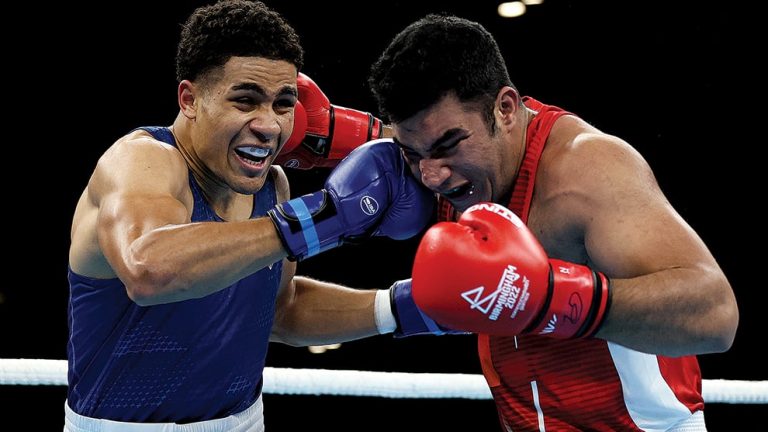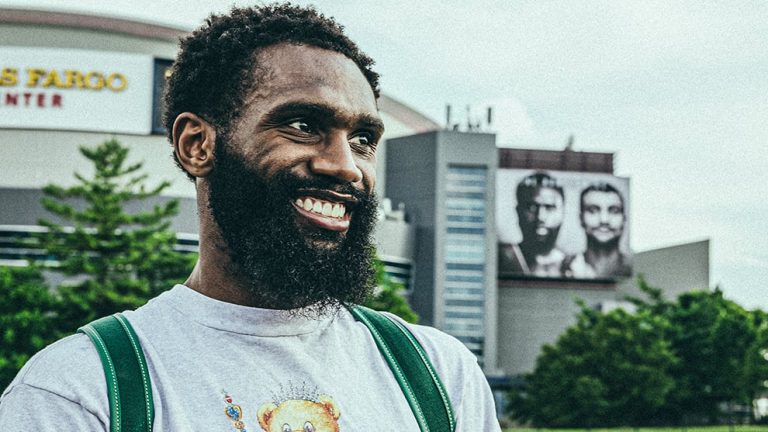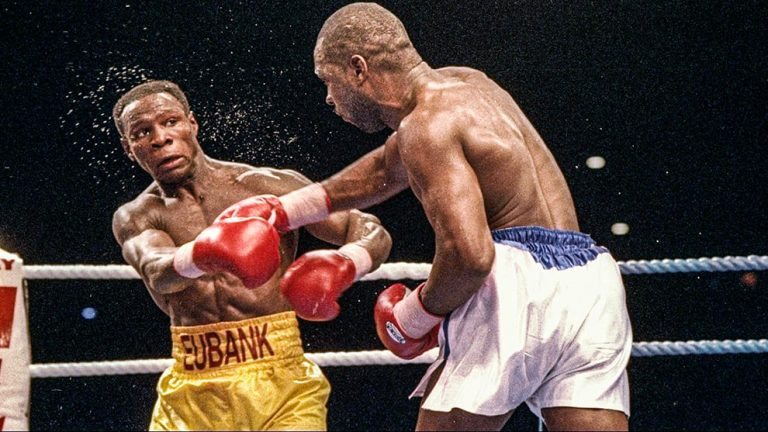Bunce Diary: Remembering some of the greatest bills in history
THERE was an inevitable search for the best card on paper, and the best card on the night, following the big reveal of the first 5 v 5 card in Saudi Arabia. The Frank and Eddie caper has legs, as they say.
There is probably not a definitive night; there are certainly nights with five or six or even seven big names on the same card in the professional game. Obviously, there have been more memorable nights and fights. This game is about the quality of the quantity; there are some stunning amateur nights, but the rules of the game (my rules) are complicated.
The night at the Azteca in 1993 with a crowd of over 140,000 people had just about everything; it wins on crowd size, it scores well on the exotic location, the gun-slinging security with their savage dogs scores high on the danger chart. Julio Cesar Chavez, Greg Haugen, Felix Trinidad, Gerald McClellan, Terry Norris, Michael Nunn, Azumah Nelson, Gabriel Ruelas and Maurice Blocker are a formidable list of boxers. However, there were six main fights, including four world title fights, and three or four were massacres. They were nasty to watch.
Still, it’s a real contender.
Some of Mike Tyson’s ancient world title fights in Las Vegas had a lot of names on the undercard and, because it was Tyson’s multiply destructive period, there was a serious global buzz. A closer look at the fights on the big nights in the Nineties is not as impressive as most people remember. There were a lot of bad mismatches; most bloody and painful mismatches are obvious, and when they happen it is not a shock. There are exceptions, but the Tyson nights had very few exceptions. The Saudi bill in June does not have one mismatch; a fight or two might be one-sided and painful, but there are no mismatches on the card. Even if Deontay Wilder knocks out Zhilei Zhang in thirty seconds, it will not be a mismatch; it will be a quick knockout. That is one of my rules.
The search led me to various amateur days and nights. Some nights are outstanding, close to unimaginable to an information freak like me. I also discovered, I think, that David Burke of the Salisbury club in Liverpool followed Floyd Mayweather into the ring at the World Amateur Championships in Berlin in 1995. Were they at the gloving-up station together, did they talk? They both lost. It was not a bad day of fights, but it was not a classic. Big names losing can add to a night’s impressive tally and position in the chart in my head; that is another of my rules.
This domestic afternoon and evening will take some beating. It is 2014 and the venue is the Walkden Sixth Form College, it’s the Youth Championships. It must have been a tenner or less to get in – ticket price is a factor.
At minimumweight, Sunny Edwards beat Andrew Cain; perhaps the best loser on the day was Ben Whittaker, beaten on points by Jimmy Smith. Nice names, Olympic silver, world champion and still plenty to come from all three. That should be enough for your tenner.
Other winners on the day at the Sixth Form college included Dalton Smith, Peter McGrail, Daniel Dubois, Zak Chelli and Viddal Riley. There are a dozen other names.
I have a bout sheet somewhere from the 1995 Liverpool Festival of Boxing where Wladimir Klitschko and Somluck Kamsing box on the same afternoon; a year later, at the Olympics in Atlanta, they would both win gold medals.
The World amateur championships has, since its inception in Havana in 1974, had some ridiculous days. The first day of semi-finals took place on August 28 back in 1974, and here are some of the losers and winners; Mate Parlov, Howard Davis, Teofilo Stevenson, Leon Spinks, Wilfredo Gomez and Ayub Kalue. Mike McCallum and dozens of others had lost earlier; the list of Soviet giants is immense. In Havana, Gomez knocked out all four of his opponents and he was still only 17 years old when he won the gold at bantamweight; he had shown up and boxed at the Munich Olympics in 1972 when he was just 15. Gomez would be a fighting legend in any era; gloves, no gloves, 15 rounds, 50 rounds, makes no difference. A king.
Just last week, before the conference to officially announce Artur Beterbiev and Dmitri Bivol, I was trying to put the two boxers at a tournament somewhere, I failed to do it. However, I knew they had been on the national team together. Bivol talks about looking up at Beterbiev; Big Artur just shrugs and smiles: “I not remember him,” he told me. Bivol was not happy with that. I did find, instead, the Wednesday in October when Oleksandr Usyk beat Beterbiev at the World championships in Baku in 2011. It was the heavyweight quarter-final. That was some day, phew.
Errol Spence lost to Serik Sapiyev, Andrew Selby beat Michael Conlan, Anthony Joshua beat Roberto Cammarelle, Ivan Dychko beat Filip Hrgovic, Vasyl Lomachenko won, Luke Campbell won. The day before, Naoya Inoue had lost to the Cuban, Yosbany Veitia, and Dychko had beaten Zhilei Zhang. What a list of world champions, Olympic gold medal winners and modern greats.
The June show in Saudi is in the mix now and, who knows, under several of my hastily invented and flexible rules, it might just be the best. That’s the beauty of our game – you never know quite what to expect.




